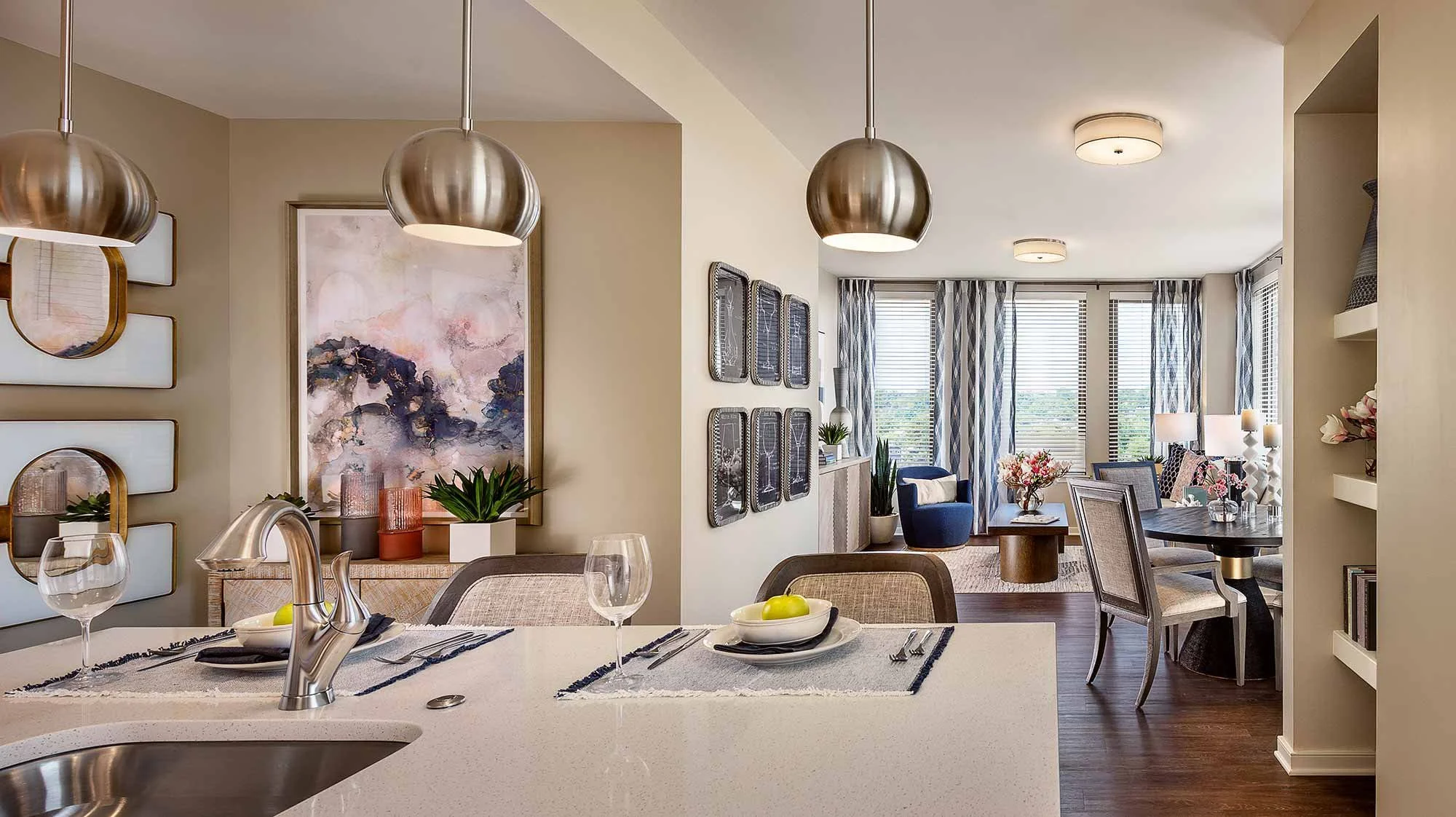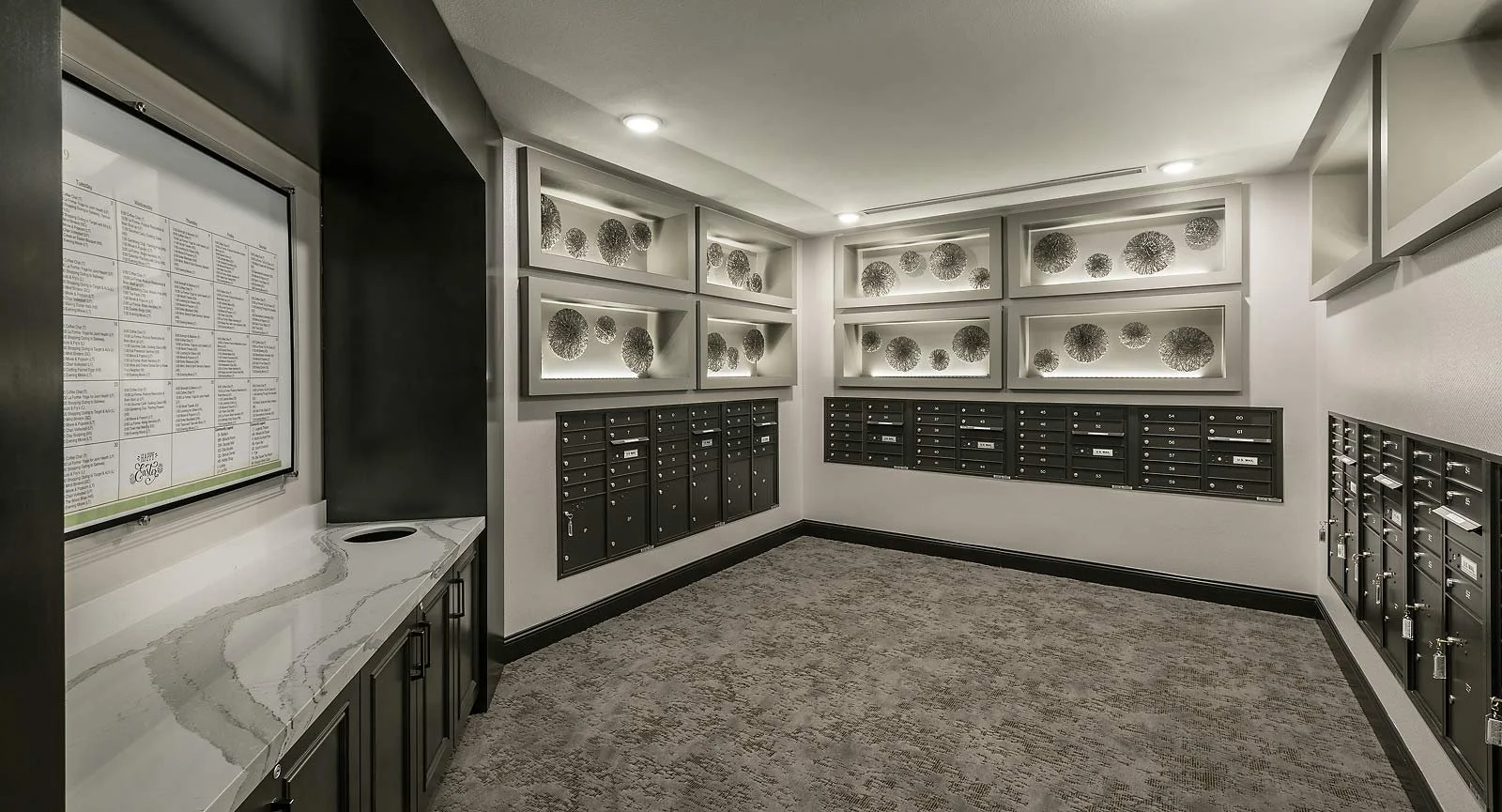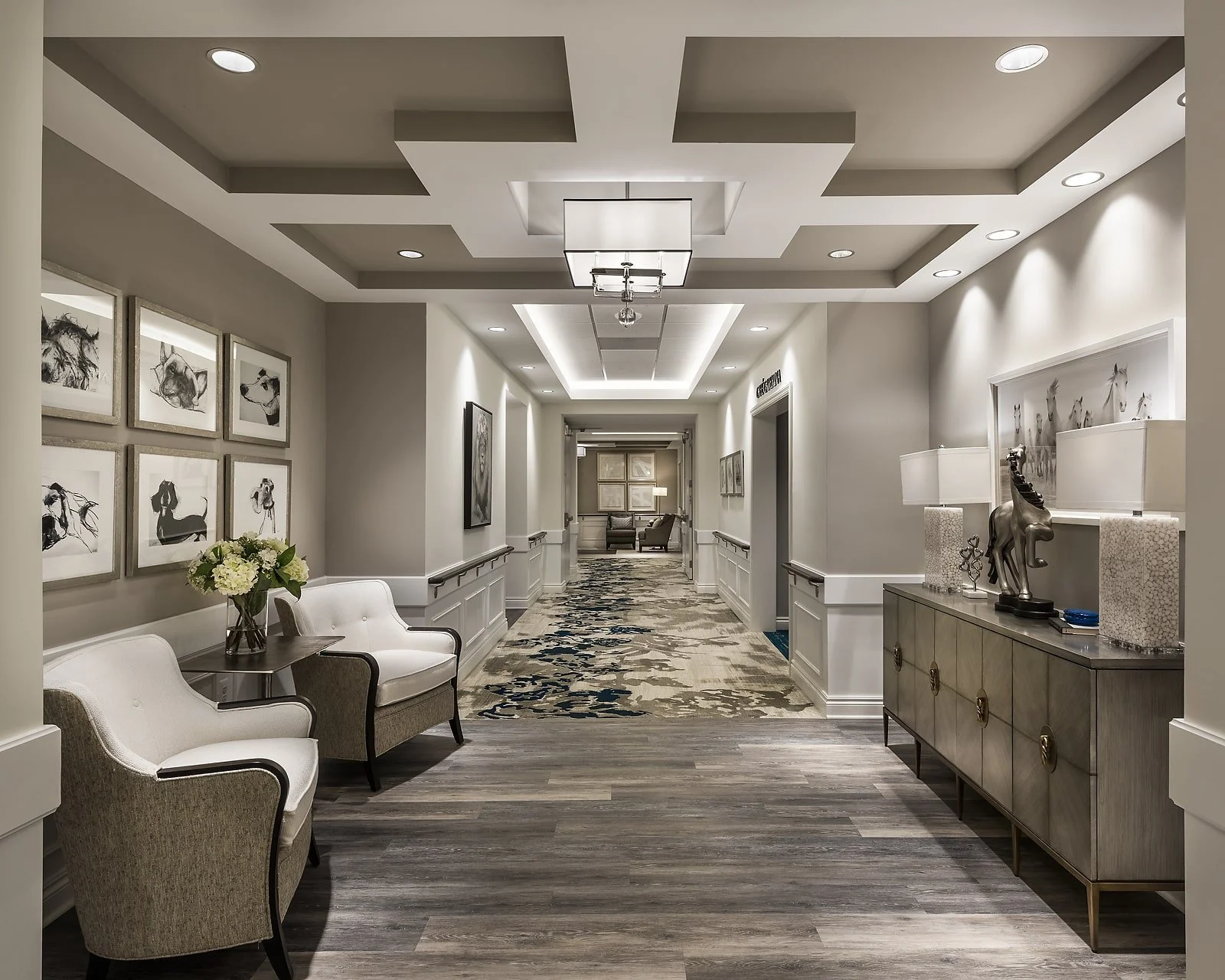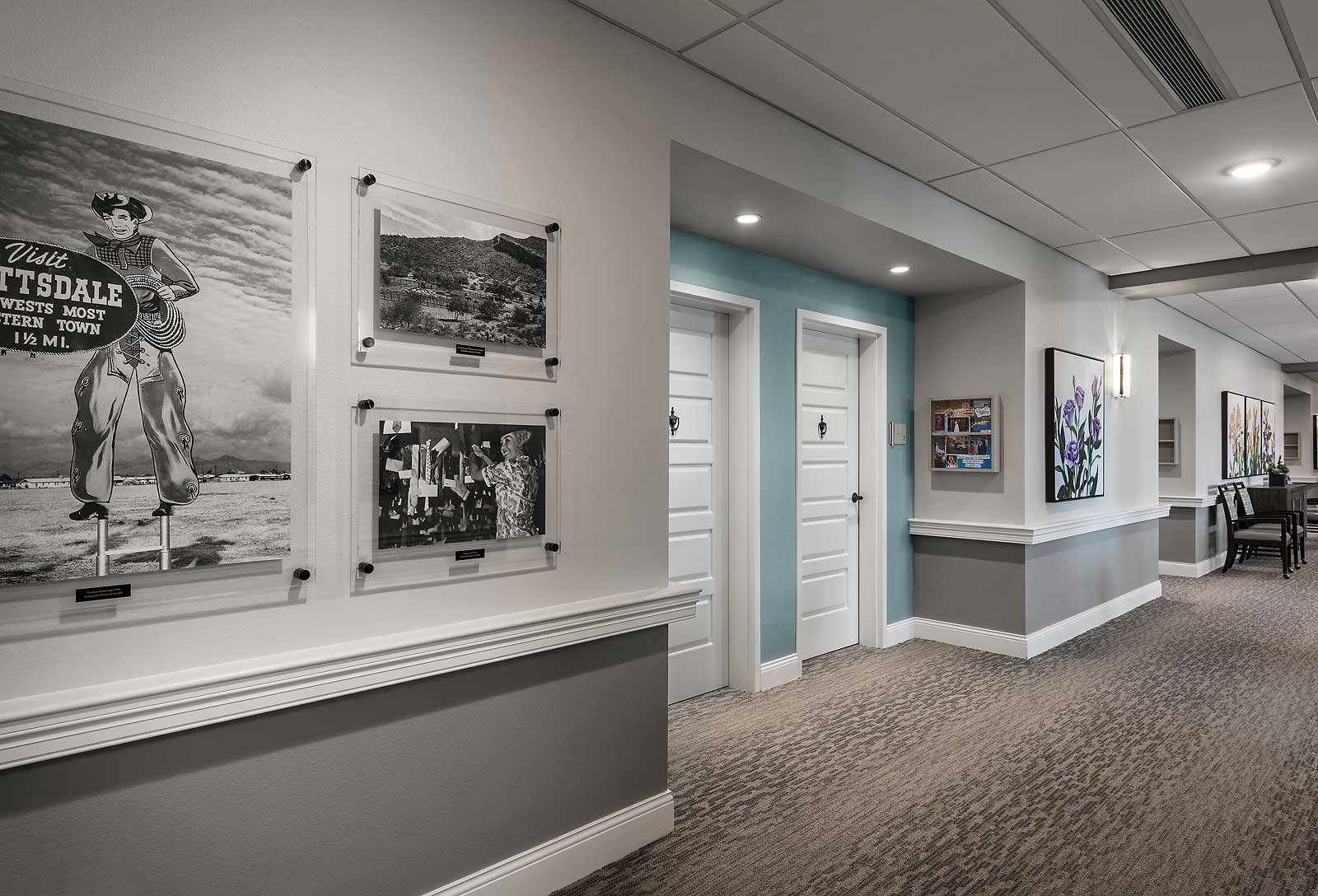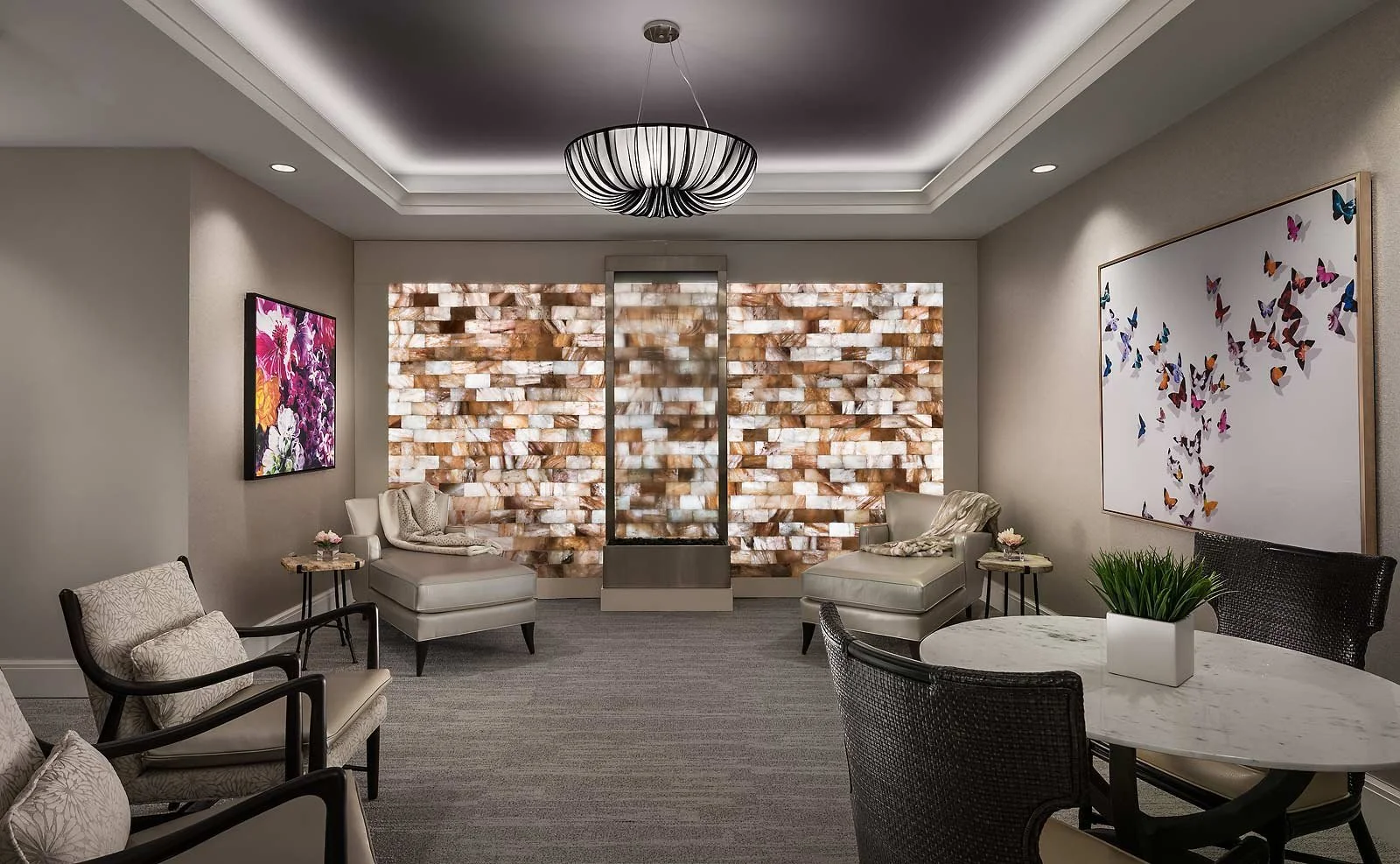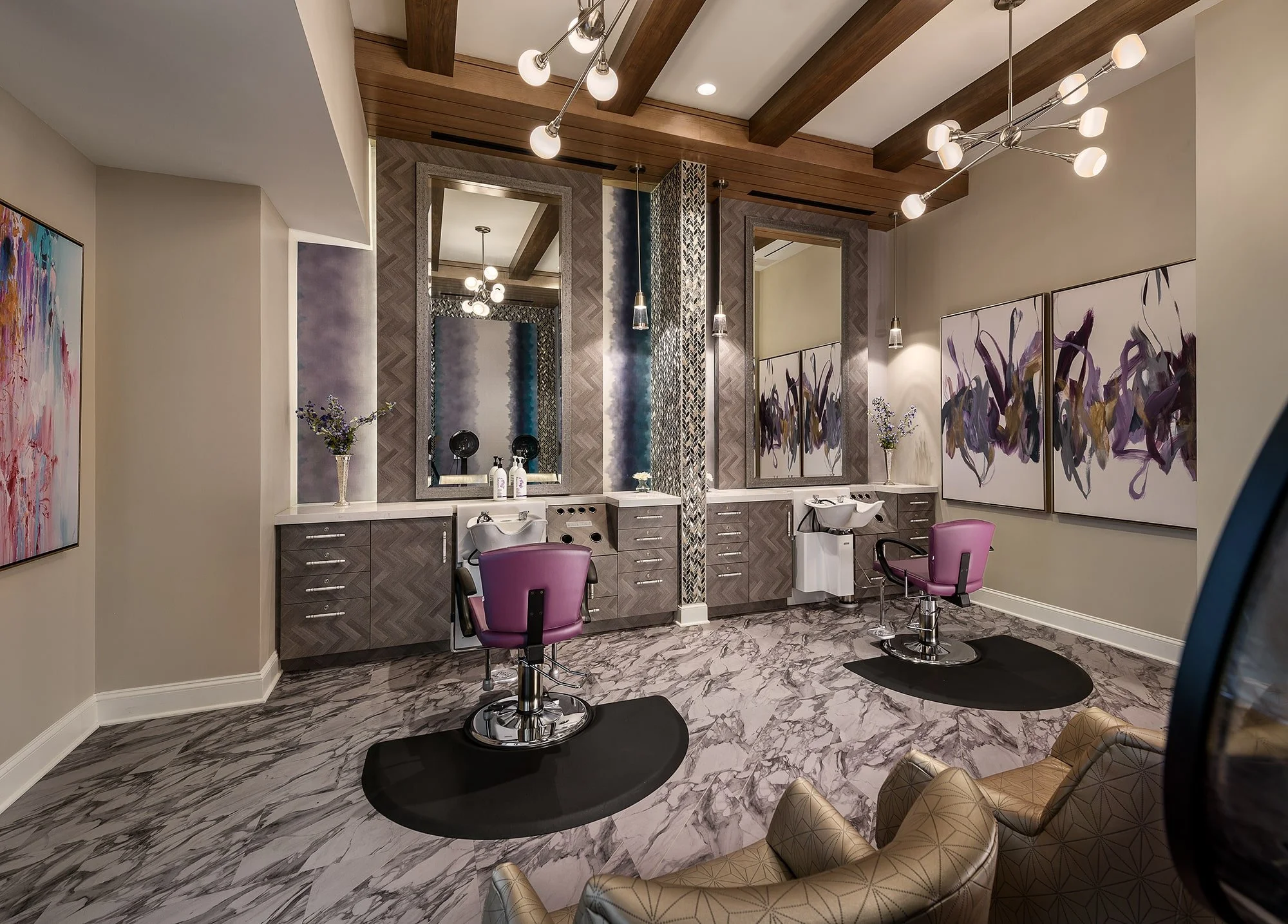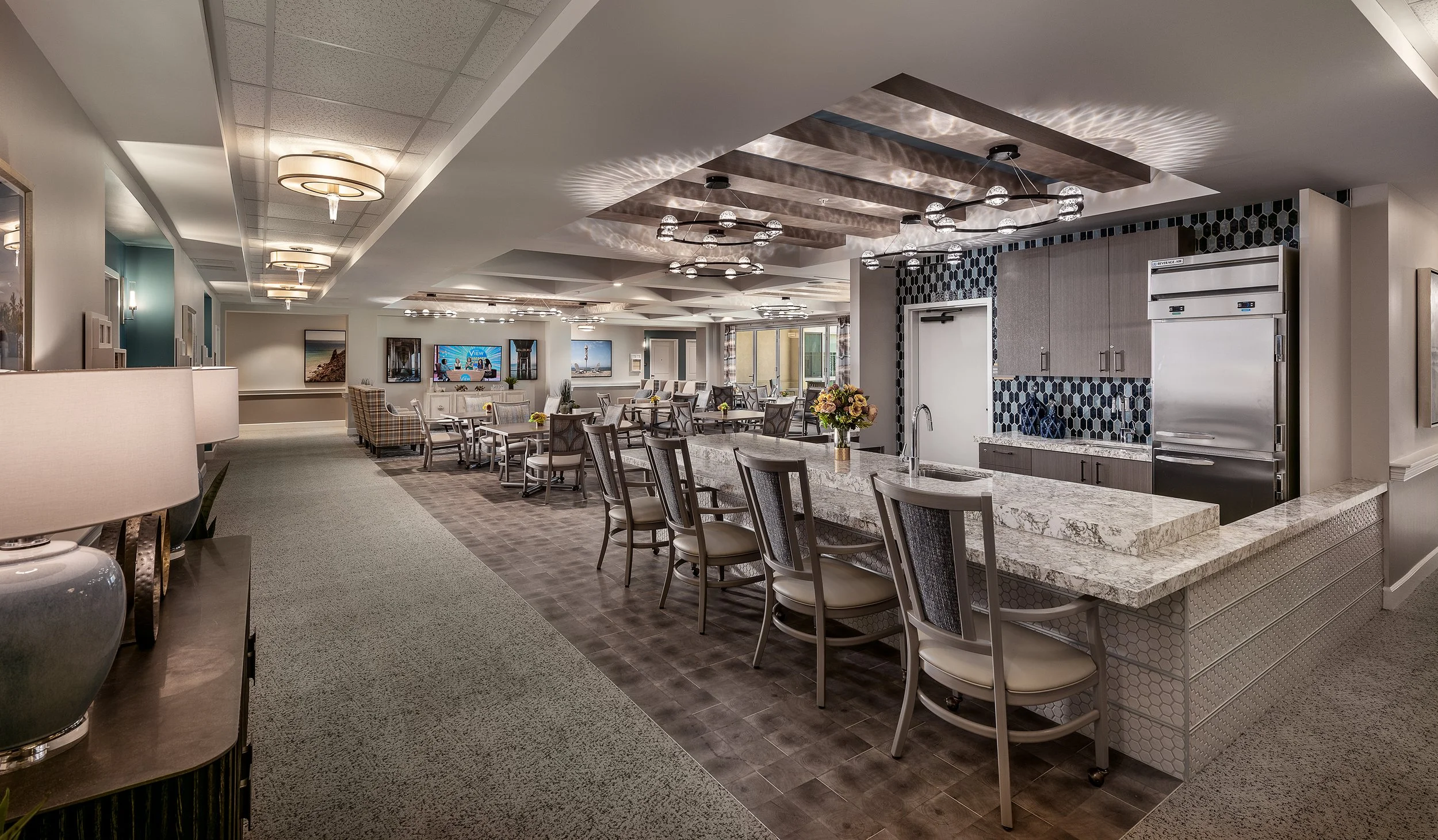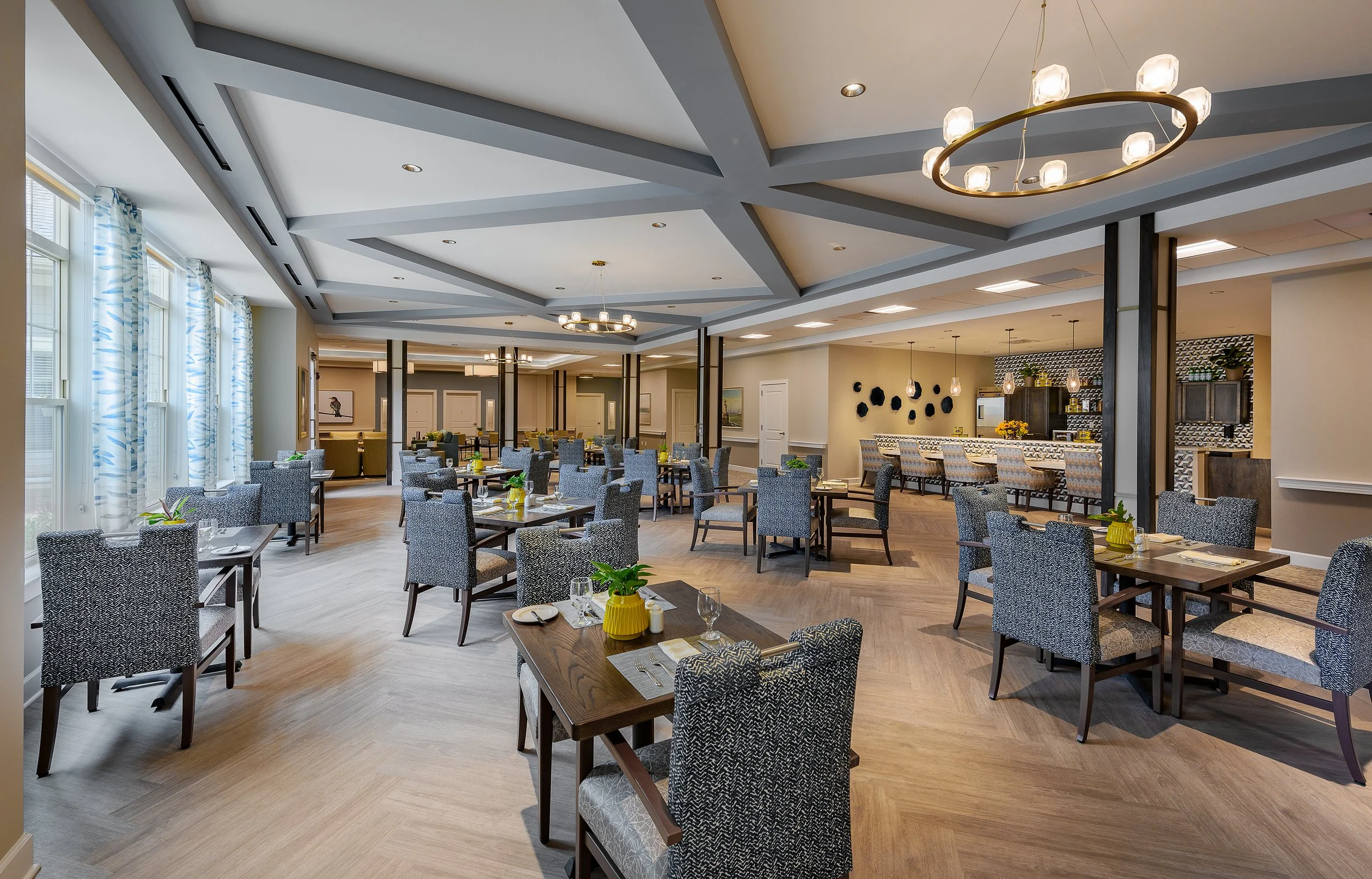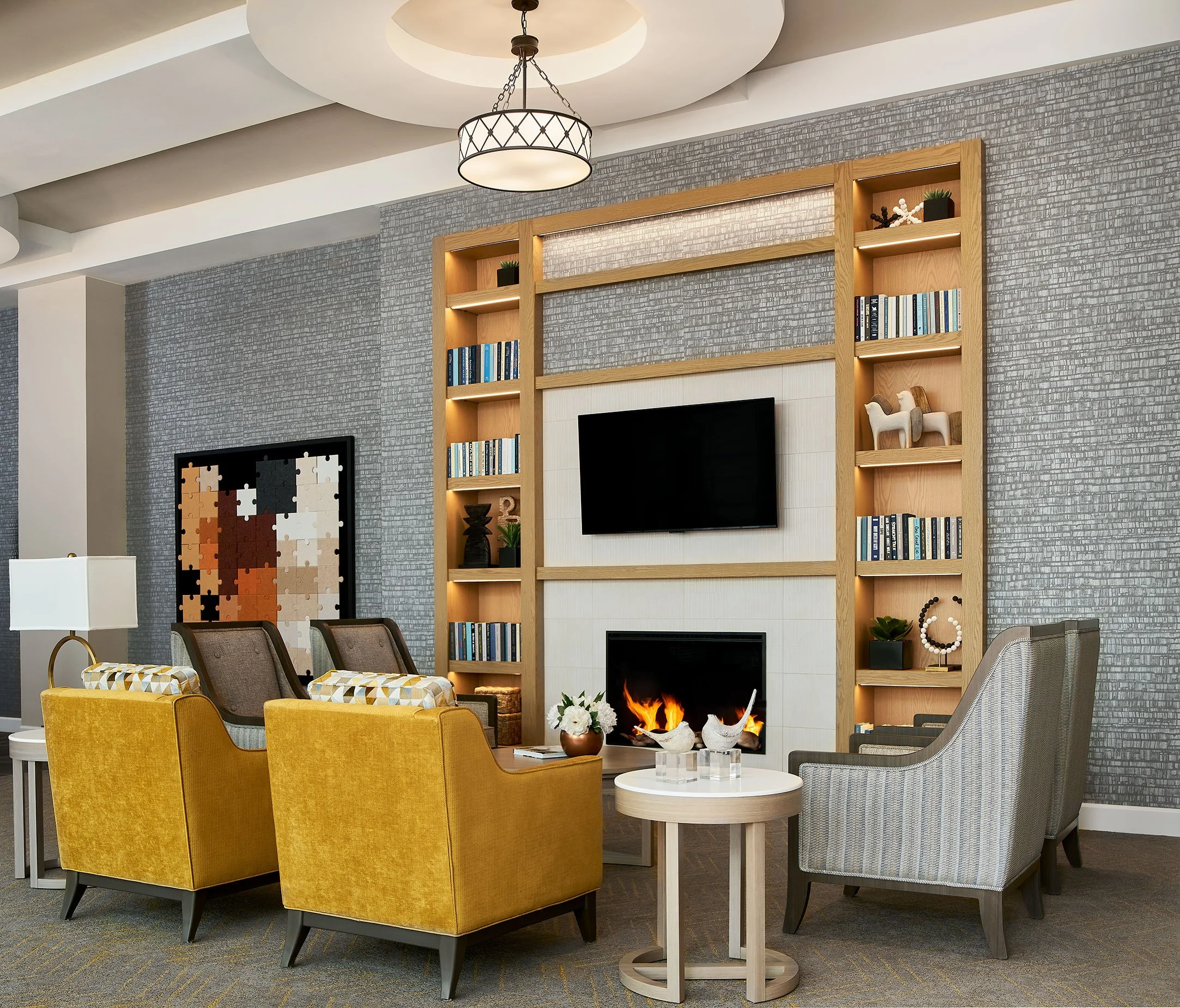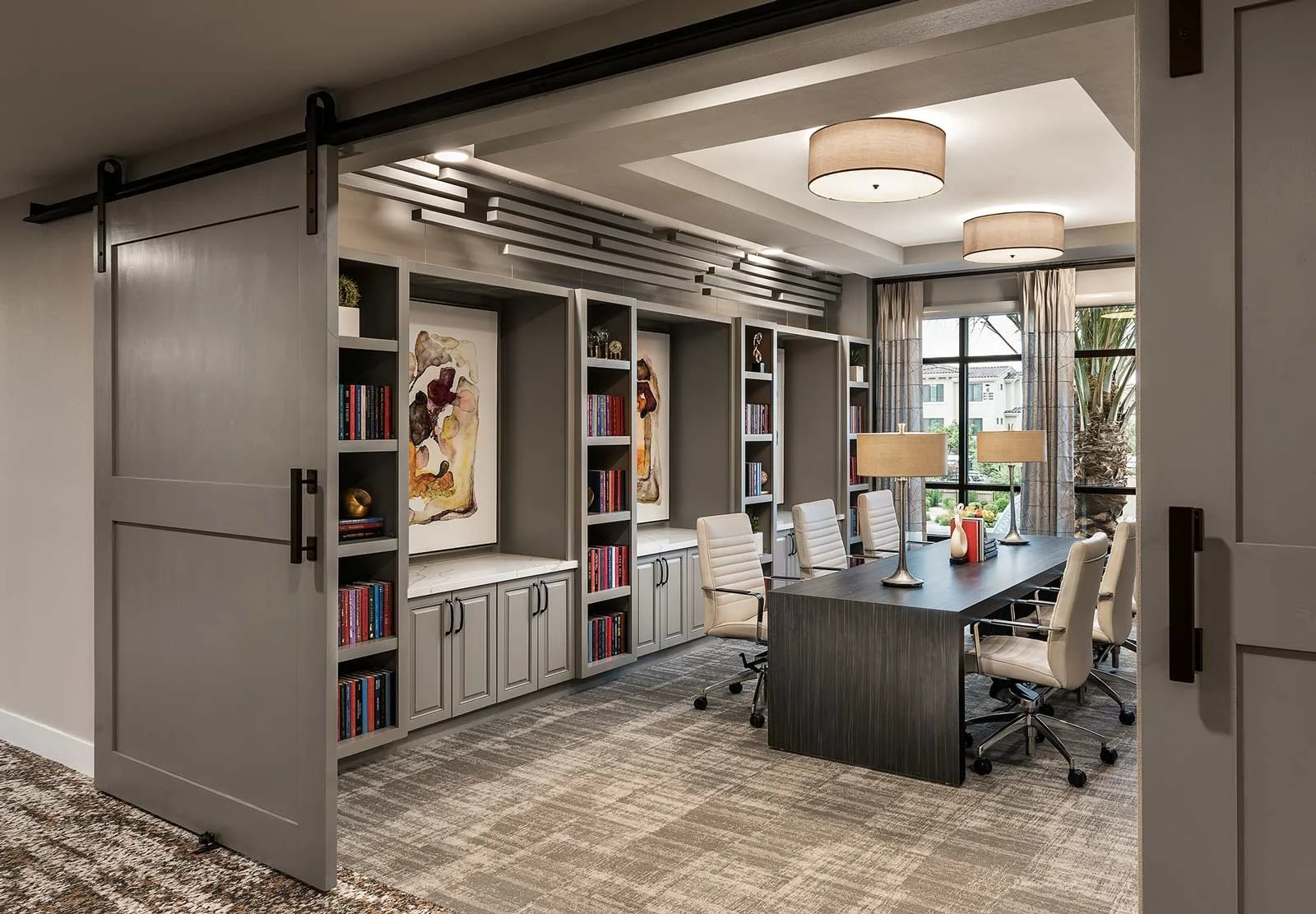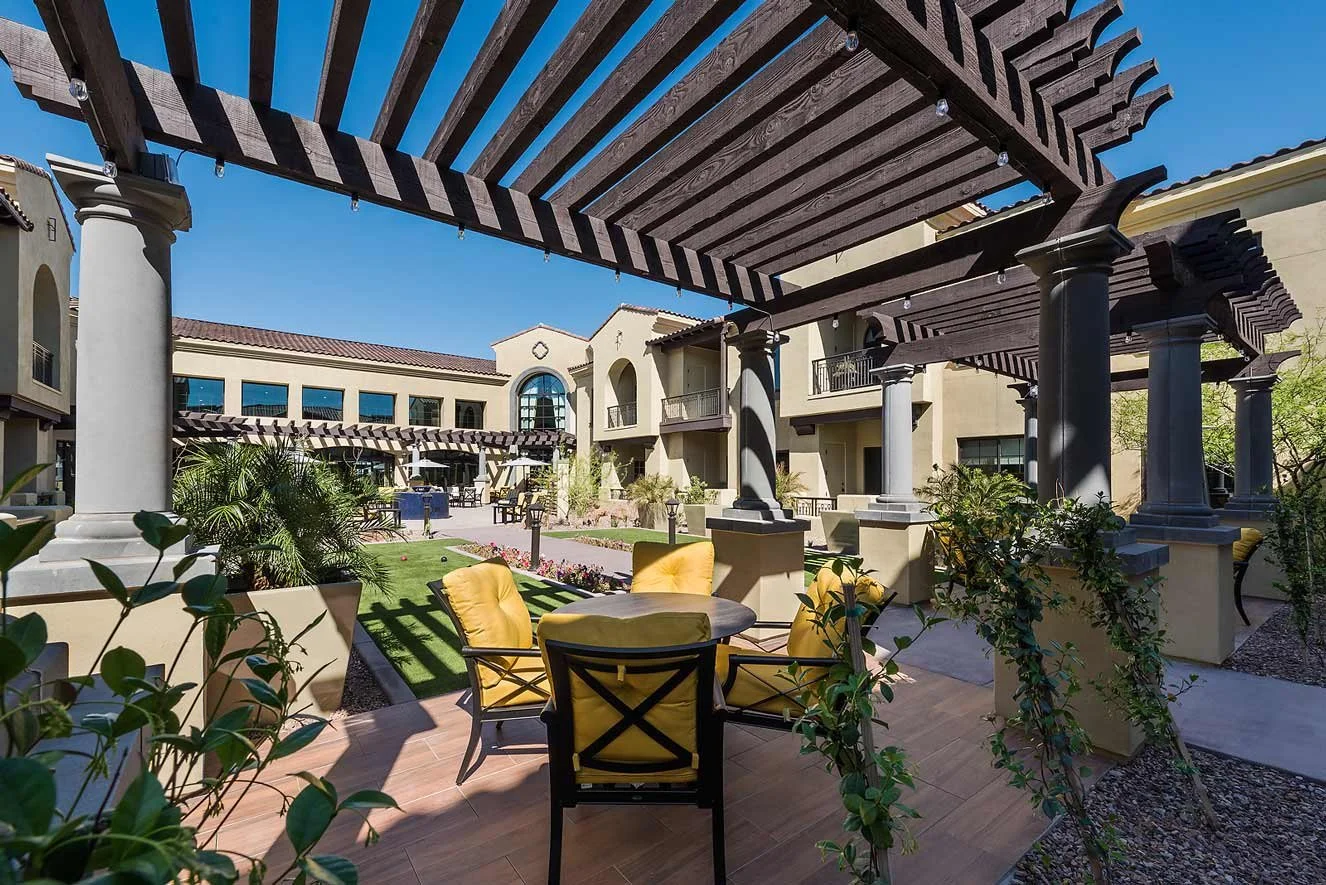Why Senior Living Design Is One of the Most Complex Sectors of Interior Design
Senior Living Interior Design is often described as “designing homes for older adults,” but in truth, it is far more layered and complex. It blends hospitality, multifamily living, healthcare, and wellness design—requiring deep expertise to create environments that are not only beautiful but also safe, engaging, and supportive for residents’ daily lives.
Designing a senior living community isn’t about creating a single space; it involves crafting 15+ distinct spaces, each with its own purpose, ambiance, and user needs, while maintaining a cohesive experience throughout.
Here’s a closer look at what this truly involves:
It’s Hospitality, Reimagined
Senior living communities are not just places to live—they are places to thrive. Dining venues mirror restaurant experiences, with multiple settings such as bistros, private dining, and cafes designed for flexibility and social connection. Lounges, club rooms, and outdoor patios provide residents and families spaces to gather, relax, and celebrate life’s moments.
In senior living, hospitality design also means:
Comfortable, durable furnishings tailored for mobility and comfort.
Lighting that creates ambiance while meeting aging eye needs.
Thoughtful acoustics to foster conversation while reducing noise.
Every hospitality-inspired space supports resident dignity while inviting joy and connection.
It’s Multifamily living, elevated
A senior living community functions as a multifamily residence on a larger, more nuanced scale. It includes:
Independent Living apartments and Assisted Living or Memory Care suites.
Corridors that are not just passageways but experiences, often with themed art and wayfinding to support memory and orientation.
Shared laundry rooms, mail areas, and storage solutions.
Designing these spaces requires balancing privacy with community, ensuring residents have a secure, comfortable home while easily accessing social areas and services.
It Requires Healthcare and Wellness Integration
Healthcare and wellness go hand in hand—and both must be thoughtfully embedded throughout the community:
• Nurse stations, medication rooms, and wellness clinics are seamlessly integrated into the design.
• Flooring transitions are carefully planned to prevent falls.
• Lighting is layered for safety, task, and ambiance.
• Air quality, material cleanability, and infection control measures are part of every specification.
Equally important are the spaces that promote overall well-being. Dedicated wellness areas such as fitness rooms, yoga studios, therapy gyms, and spa-inspired salons provide daily opportunities for residents to maintain their physical and mental health. These environments are not just amenities—they are essential to supporting longevity, independence, and quality of life.
It Requires Expertise in The Aging Process
Senior living design demands more than aesthetic sensibility—it requires a deep understanding of the aging process. At Thoma-Holec Design, this understanding is embedded into every aspect of our work, thanks to the leadership of our Founder and Principal, LuAnn Thoma-Holec.
LuAnn holds a Graduate Certificate in Gerontology from Arizona State University and a Bachelor of Science in Interior Design and Museum Arts. She is also a Certified Active Adult Specialist in Housing (CAASH), NCIDQ-certified, and a licensed interior designer in multiple states. Her formal education, paired with decades of experience, gives our team a unique lens for designing environments that anticipate and support the changing needs of older adults.
• Designs support mobility challenges, hearing and vision changes, and cognitive differences.
• Memory Care environments require clear sightlines, themed corridors, and secured outdoor areas that encourage safe exploration.
• Every material is evaluated for safety, durability, and sensory comfort.
These considerations are critical to creating environments that promote independence, dignity, and quality of life for older adults.
Amenity Design That Enriches Daily Living
A hallmark of modern senior living communities is the wide array of thoughtfully designed amenity spaces—each contributing to a lifestyle of engagement, purpose, and enjoyment. These amenities are more than just "extras”—they're vital components of the resident experience, encouraging socialization, learning, creativity, and wellness.
Art studios and maker spaces that inspire creativity and self-expression
Libraries and reading nooks for quiet retreat and lifelong learning
Activity rooms for games, classes, and community programming
Theaters and media rooms for entertainment and cultural enrichment
Outdoor courtyards and gardening areas for fresh air and connection to nature
Each of these amenity spaces must feel purposeful, inviting, and tailored to the community’s identity—encouraging residents to stay active, connected, and fulfilled.
It’s More Than 15 Distinct Spaces—All Designed with Purpose
Designing a senior living community means planning for a wide range of environments—each with a specific role in daily life, care delivery, and resident engagement.
Here’s a glimpse at what that actually entails:
Lobbies and reception areas
Multiple dining venues
Bistro and bar areas
Private dining
Library and reading nooks
Activity rooms
Art studios
Fitness and wellness rooms
Salons and barbershops
Outdoor courtyards and patios
Memory Care activity spaces
Themed corridors for wayfinding
Chapel or meditation rooms
Staff offices and workspaces
Resident apartments and suites
Each of these areas must feel purposeful and distinct while flowing cohesively within the community’s overall aesthetic and operational goals
Balancing Harmony and Unique Experiences
The true artistry of Senior Living design lies in balancing harmony with individuality:
The community must have a unified aesthetic and brand identity.
Each space offers a unique experience through materiality, color, lighting, and furniture, providing moments of delight for residents and visitors.
Transitions between areas are intentional, allowing residents to easily navigate while enjoying variety in their daily environment.
Why It Matters
Senior Living Interior Design is about more than beauty—it is about shaping environments where residents feel at home, supported, and engaged. It is about designing places that encourage independence, foster community, and provide the safety and care residents need to thrive.
At Thoma-Holec Design, we are honored to contribute to this sector by bringing thoughtful, purposeful design to every corner of a community, ensuring that every space, large or small, enhances quality of life.







